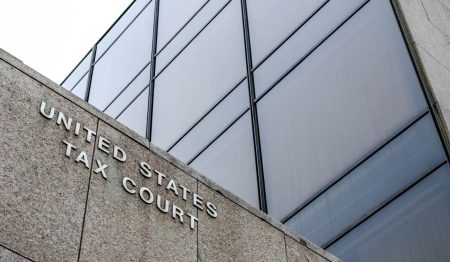A pandemic-related tax credit continues to be in the news—and the focus of IRS scrutiny. The Employee Retention Credit—or ERC—is a refundable tax credit for businesses intended to provide relief for companies that kept employees on the payroll during Covid-19. Unfortunately, it has also become a magnet for fraud.
ERC Relief
Here’s how the ERC works. Eligible employers are those that paid qualified wages to some or all employees after March 12, 2020, and before January 1, 2022. Typically, to qualify, you must demonstrate that your business was shut down by a government order due to the pandemic during 2020 or the first three calendar quarters of 2021, or that you experienced a specific decline in gross receipts during the eligibility periods during 2020 or the first three calendar quarters of 2021. Some businesses may also qualify as a recovery startup business for the third or fourth quarters of 2021 (otherwise, the ERC relief was phased out by Congress for businesses for that period).
The credit is 50% of up to $10,000 in wages, meaning that it can be as high as $5,000 per employee in 2020 and as high as $21,000 per employee in 2021 (totaling the $26,000 per employee that is regularly touted).
The ERC is available to most kinds of businesses, including tax-exempt businesses. It is not available to individuals, including freelancers and independent contractors.
Some additional restrictions apply. For example, businesses may not include wages funded by a PPP loan when calculating wages eligible for the ERC.
Why Now?
The original idea of the credit was to get money into the hands of employers experiencing a decline as it was happening. That meant that businesses could claim the credit at the time they were submitting payroll tax returns. But those eligible employers who missed out originally can still claim the ERC on an amended payroll tax return for a period within those dates.
The normal statutes of limitations apply, so businesses generally have until April 15, 2024, to file amended returns for 2020, and until April 15, 2025, to file amended returns for all 2021 quarters. Those windows are closing, so qualifying businesses have to act soon if they want to benefit.
Scams
As you can imagine, the appeal of $26,000 per employee is considerable—for legitimate businesses and scammers. Taxpayers and tax professionals alike have noted an uptick in aggressive promotions—I get several calls and emails each day, including one on Tuesday advising, “Our records indicate that you have not yet filed for the ertc employee retention refund.”
Last week, I received an onslaught of emails suggesting that I had made application but still needed “important information needed to complete your submission.” Three emails later, I received a message advising, “Kelly, we’re not just another ERC startup company,” and asking, “I’m not sure what’s holding you back, this opportunity ends soon. When is a good time for a quick call this week or next?”
It’s relentless.
The IRS has also noticed.
Earlier this year, the IRS included ERC scams on its annual Dirty Dozen list. Now, IRS Commissioner Danny Werfel said the tax agency has entered a new phase of increasing scrutiny on dubious submissions while renewing consumer warnings against aggressive marketing. Werfel says the IRS is intensifying compliance work and putting in place additional procedures to deal with ERC-related fraud.
Timing is a factor. “The further we get from the pandemic, we believe the percentage of legitimate claims coming in is declining,” Werfel told attendees at the IRS Nationwide Tax Forum in Atlanta. “Instead, we continue to see more and more questionable claims coming in following the onslaught of misleading marketing from promoters pushing businesses to apply. To address this, the IRS continues to intensify our compliance work in this area.”
ERC (Mis)Promotion
The aggressive promotions for the credit are raising eyebrows—and interest—at the agency.
“The amount of misleading marketing around this credit is staggering, and it is creating an array of problems for tax professionals and the IRS while adding risk for businesses improperly claiming the credit,” Werfel said. “A terrible scenario is unfolding that hurts everyone involved — except the promoters.”
“This was not how the law was meant to work, and Congress can help with this situation,” Werfel added. “We will work with Treasury to explore legislative solutions we can share with Congress to help address fraud and error, including potentially putting an earlier ending date for businesses to claim the credit and increase IRS oversight of return preparers.”
Numbers
The IRS has received over 2.5 million ERC claims since the program was enacted. The IRS says it has made substantial progress on these claims this year, with 99% of claims approximately three months old as of mid-July.
Working on the amended returns is taking time. As noted earlier, as of July 12, 2023, the total inventory of unprocessed amended payroll returns was approximately 442,000—many of those are related to the ERC. All the inventory is being worked at just two sites (Cincinnati and Ogden) with staff trained to review those returns.
Additionally, Werfel advised that the IRS Criminal Investigation division is working to identify fraud and promoters of fraudulent claims.
Potential Problems
Businesses that improperly claim the ERC must pay it back. Businesses may also be subject to penalties and interest.
In some cases, criminal penalties and charges could apply.
To help tax professionals and others, the IRS continues to provide additional legal clarity around ERC rules. On July 21, the IRS issued a legal advice memorandum applying the statutory requirements to five scenarios. The memo specifically addressed that employers experiencing supply chain disruptions qualify for ERC only if they had to suspend their business operations because their suppliers were unable to provide critical goods or materials due to a government order that caused the supplier to suspend its operations. This is contrary to advice given by unscrupulous preparers who have suggested that any supply chain disruptions would qualify.
Aggressive Marketing
Werfel said the IRS remains deeply concerned about the impact of the ERC on tax professionals who are doing the right thing while their clients are being lured by aggressive marketing claims.
“Hard-working tax professionals who play by the rules see their clients go elsewhere, lured by false promises and wild exaggerations,” Werfel added. “The resulting number of claims prevents the IRS from doing other priority work. But the biggest risk is being taken by the promoters pushing these schemes and businesses filing these claims. This is an area where we urge caution; those improperly claiming the credit could face follow-up action from the IRS.”
Warning Signs
The IRS notes that it continues to see ways that promoters can lure businesses into applying for the credit. Some of those include:
- Aggressive marketing on radio, television and online—as well as phone calls and text messages.
- Direct mail. Some ERC mills are sending out fake letters to taxpayers from non-existent groups like the “Department of Employee Retention Credit.” These letters can look like official IRS correspondence or an official government mailing with language urging immediate action.
- Leaving out key details. Third-party promoters of the ERC often don’t accurately explain eligibility requirements or how the credit is computed. They may make broad arguments suggesting that all employers are eligible without evaluating an employer’s individual circumstances (I’ve noted this repeatedly on social media).
- The promoters may not inform taxpayers that they need to reduce wage deductions claimed on their federal income tax return by the amount of the ERC. This is a key detail that is being left out of these discussions. Legitimate tax pros have repeatedly recounted awkward conversations about the need to amend returns when businesses were not expecting to do so. This is a particular concern in a business “divorce”—we’re already seeing this play out in real time.
- Payroll Protection Program participation. Many promoters don’t tell employers that they can’t claim the ERC on wages reported as payroll costs for purposes of PPP.
Protect Yourself
The IRS reminds those being approached by these promoters that there are simple steps that can be taken to protect themselves from making an improper ERC. Many of these are simply common sense. Their number one tip—and mine? Work with a trusted tax professional.
You should also request a detailed worksheet explaining ERC eligibility and the computations used to determine the ERC amount. Many of my colleagues have noted that when they’ve asked companies to secure this information from those promoters, the promoters have balked. That’s a clear red flag.
Finally, only apply if you believe you qualify. It’s not intended to be a “throw it against the wall and see if it sticks” credit—it’s a legitimate mechanism for providing relief to employers who kept their lights on during Covid. Don’t get caught up in a money grab that could backfire.
Read the full article here








